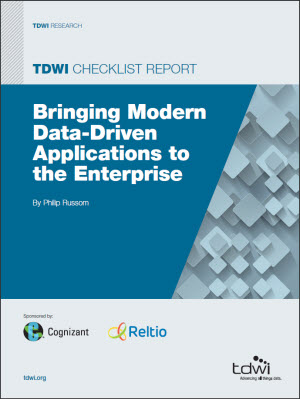
TDWI Checklist Report | Bringing Modern Data-Driven Applications to the Enterprise
March 20, 2015
The term data driven is bandied about nowadays by many people
in many contexts. For example, more business managers need to
make fact-based decisions and run a business “by the numbers”
based on reliable data and metrics that are integrated into business
processes. As new data sources come online—from third-party
sources, social media, and even machinery, devices, and smartphone
apps—business teams need an efficient and effective way to relate
new data and leverage it to achieve organizational goals.
For managers, processes, and organizations to be truly data driven
requires going beyond the hype in the press and siloed master data
management processes. The success of consumer data-driven
applications—such as LinkedIn and Facebook—has shown that
frontline users can easily access, improve, analyze, and share
their data in a seamless, unified environment. The problem with
traditional process-driven applications such as legacy CRM and ERP
systems is that they place the burden of capturing analytical insight,
making decisions, and taking action on the business user. To correct
that problem and offer other benefits, modern enterprise data-driven
applications (DDAs) predict and prescribe what to do next
with reliable data, relevant insights, and recommended actions.
To help the reader select data-driven applications (DDAs) and
prepare for their use, this Checklist Report drills down into their
desirable characteristics, best practices, and use cases.